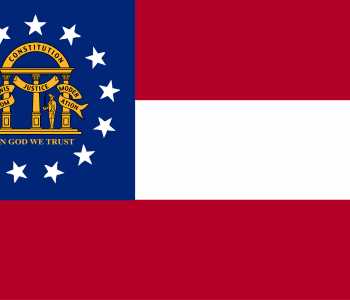How To Start A Restaurant

A restaurant is more than a business entity that serves food dishes but is a place for gathering. To get the foot traffic to make a profit, owners need a restaurant business plan.
For startup restaurants to attract investors, employees, and hungry customers is a huge undertaking. It requires owners to know the restaurant industry, target audience, food prices, equipment fees, and labor costs. Owners must create a plan to factor in restaurant start-up costs and potential financing for future renovations.
Getting people to eat at a restaurant involves more than cooking delicious foods and pouring good wine. It needs to be a memorable experience. Although menu items matter, so do a server's attention to detail, customer service, and atmosphere.
Starting a restaurant business does not happen overnight. Owners must deal with small business administration, restaurant costs, and safety regulations. Restaurant ownership is more than a passion for cooking or food. It involves signing several documents, getting licenses, following local rules and state laws.
Thus, to start a restaurant, the owner's heart must truly be in it.
Restaurant Business Overview
People go to restaurants to pay for the convenience of food ready to eat in a comfortable and clean setting. What is visible to diners in the eating area is a result from behind the scenes work. Whether the restaurant offers fast food, organic dishes, or fine dining, customer expectations are often the same. Diners want quick service, convenience, and quality customer service every time.
If the restaurant offers full-service, sit-down experience, or casual dining, every detail matters. From the dishes to the chairs, even right down to the tablecloths, everything must be perfect.
While customers wait for their meals, they look at the condition of the surrounding items. Diners will assess the state of staff uniforms and cutlery. If eaters find spots on their glasses or stains on a server's shirt, they will perceive the restaurant as unclean.
Although customers go to restaurants to satisfy their hunger, their other senses may cause them to leave with a "bad taste in their mouth."
Train the staff on how to fulfill job requirements and the importance of cleanliness. Inform employees how both can affect a restaurant's reputation.
To ensure customers leave feeling full and happy, prepare for potential mishaps.
Here are some ways to help keep the restaurant in tip-top shape and running smoothly:
Have extra uniforms for the staff, tablecloths for tables, napkins, etc.
Ask employees to come in early to set up and assess tableware to ensure they are spotless.
Check the bathrooms are clean and fully stocked (toilet paper, soap dispensers, etc.).
Ensure the refrigerator has enough food to supply what is on the menu, and food prep is complete
One of the best ways is to think like a customer. Look at the state of the restaurant as a whole through the eyes of diners to gain a better sense of how they perceive it. Customers use social media to share their experiences (i.e., Facebook and Yelp). Thus, do everything possible to help them leave positive reviews.
11 Steps on How To Start a Restaurant Business
Step 1: Write a business plan
After defining the restaurant concept, owners need to write a formal business plan. Banks and shareholders often want to review a business outline before investing.
Step 2: Form a business entity
Restaurant owners must take their business plan and start putting it into action.
The owner needs to choose an entity:
Sole proprietorship
Partnership
Corporation
Limited Liability Company (LLC)
Step 3: Choose a business name
Once the owner knows what type of restaurant to run and has a business plan, they must choose a business name. Selecting a name that is easy to say, read, hear, and write, is often not so simple. The task becomes even more challenging when trying to find a name that is not already in use.
Step 4: Select the restaurant location
When owners look for a business structure, visibility is crucial. Finding a location that is easy to find, has enough parking space, and is close to locals, needs to be a priority.
Step 5: Apply for business licenses and permits
For a restaurant to operate, it needs several legal licenses and permits. The documents will vary depending on the state, city, or town laws. What the restaurant serves also affects the types of certificates a business needs. Some may need a food service license and liquor license. Most are subject to health and food safety regulations and health department inspections.
Besides getting licenses, restaurants need to hold several other significant documents. (i.e., Employer Identification Number (EIN), Occupancy Permit, sales tax permit, etc.).
Restaurant owners should research licenses and permits to learn what their business needs.
Step 6: Get financing
Starting a restaurant business can be costly and may need funding.
Some restaurant start-up costs include:
Property - i.e., leasing and renovation costs
Start-up capital - i.e., insurance and payroll
Furniture - i.e., tables and chairs
Kitchen appliances - i.e., stoves, ovens, and dishwashers
Supplies - i.e., cutlery, tableware, and cooking supplies
Signage and menus
Food inventory
Costs depend on the size of the restaurant, food dishes, number of employees, and location. Attracting investors requires a solid plan, good credit, and skillful employees. Restaurant costs can also vary considerably with any expansion or renovation plans.
Step 7: Open a business bank account
Owners should always keep their personal and business finances separate. Opening a business bank account is in the best interest of restaurant owners. Having another account is good for tax purposes and tracking cash flow.
Step 8: Develop a Marketing Plan that reaches a target audience
To attract new customers and have them return, owners need a marketing plan. The fees and costs for marketing depend on the techniques owners use and their size. Some choose to advertise on social media like Facebook and review sites like Google.
Before putting money on paid campaigns or time into social media, get to know the target market. Restaurant owners need to learn what their customers want and meet their needs.
Although the foods a restaurant can offer are endless, choose meals that secure profits. Restaurant business owners should focus mainly on serving the most popular meals. Tracking orders helps determine what can stay on the menu and what should go. It can also help uncover food trends, price dishes, and come up with new meal ideas.
Step 9: Get business insurance
Restaurants need several types of insurance to protect their business.
Some insurances a restaurant should have included:
General liability insurance
Commercial property insurance
Worker's compensation insurance
It is best to consult with an attorney and insurance agent to learn more about the specifics and costs of policies.
Step 10: Hire staff
Hiring employees with skill, education, and experience is useful when running a restaurant. To secure small business loans, it may require a Small Business Administration (SBA) to guarantee funding from lenders.
Employing professional chefs and servers with experience will help increase restaurant success. They will understand the industry and how restaurants function. It can help lower training costs and the time managers spend on correcting staff.
When considering hiring new employees, consider the following:
Customer service skills.
Management experience.
Cooking experience.
Multitasking skills.
Professionalism.
Relative education and expertise in various areas
Step 11: Set up an accounting system
Ensuring the long-term success of a business requires an effective accounting system. Owners need to create a budgeting plan for employee salaries, insurance, and paid time off.
For restaurants to keep their cash flow and taxes in order, owners need to set up an accounting system.
Conclusion
Restaurant business owners rely on the quality of their staff, dishes, and finances. Without these three essential components, a restaurant is sure to fail. To keep a business open and profiting, owners must put a great deal of care and time into each of them.






